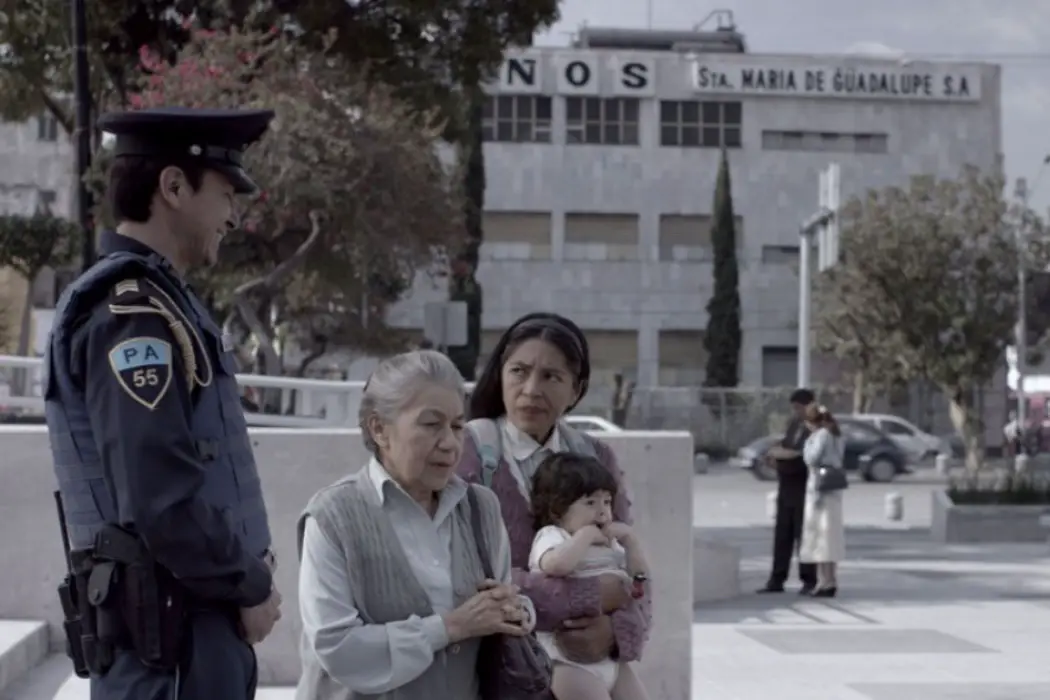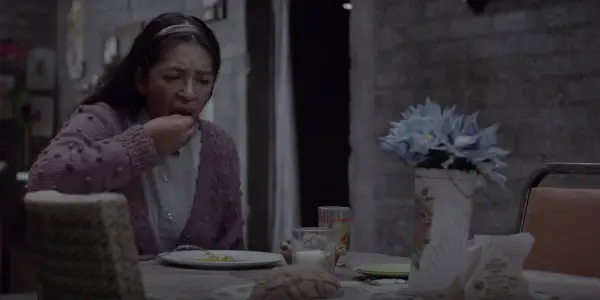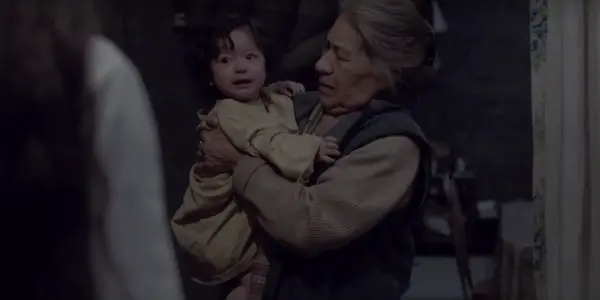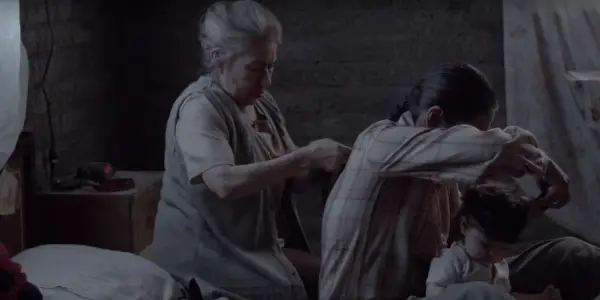TAMARA AND THE LADYBUG: Heartbreaking Portrayal Of Female Compassion

Zoe Crombie is a Film Studies student from Lancaster University,…
More often than not, films about individuals with disabilities come off as either insensitive or overly patronizing. On one side of the spectrum, you have movies like Freaks that tend to gawp at the oddness of their subjects, and on the other, you have more recent attempts like Me Before You, which craft disabled people into otherwise flawless beings, to the point where they become essentially unrelatable.
Tamara and the Ladybug manages to completely dodge both of these pitfalls, and presents a realistic portrait of a mentally disabled woman that isn’t told through the perspective of another, and who is shown to struggle both personally and institutionally because of it. The aim of the ReelAbilities International Film Festival is to showcase movies with thoughtful, inclusive, and realistic depictions of disabilities of all kinds – director and writer Lucía Carreras achieves this goal and more.
Premise and Pacing
After her brother, Paco, leaves for unexplained but determinable reasons, the developmentally disabled Tamara (Ángeles Cruz) is left to her own devices in her presumed hometown of Mexico City, with only her waitressing job and her collection of ladybug-based merchandise to her name. When she comes across a seemingly abandoned baby at a newsstand one day, Tamara decides to take her home and name her after this fixation, giving her the unusual moniker ‘Ladybug’. This attracts the attention of local quesadilla stand owner Mrs. Meche (Angelina Peláez), who takes it upon herself to keep them both safe, all while trying to keep a roof over her own head.

Though the audience may be able to infer more information from the backdrop of the film than Tamara can, Tamara and the Ladybug still insists on keeping the events from her perspective, and thus much of the movie goes at a glacial pace. Towards the beginning, this can feel a little dull, but as the tension builds and you get to know the characters better, these slow moments of understanding become increasingly moving, and you, in turn, become more empathetic towards Tamara. Watching her bus journey via a lingering long take may seem monotonous when you don’t fully understand her inner workings, but by the time she’s affectionately staring at a ladybug toy from a street seller, you can’t help but be enthralled by her kind-hearted worldview.
Characterization
Brought to life by Ángeles Cruz through an expertly subtle physical performance, Tamara is a character with little dialogue, but a tangible sense of realism and truth. Her mental disability is not downplayed, and the effect on those close to her is acknowledged, but ultimately this is her story, and the most significant takeaway of her character is that her hopes and desires still hold significance. One scene may feature her weeping quietly over a dead lizard, but the meaning feels far grander than this small episode in her life; for someone who is allowed so little, seemingly insignificant grasps at happiness mean an awful lot more. Her character is perhaps best summarised by the decor in her home, a dilapidated shack covered in vibrant red ladybugs, that seem to symbolize both her childlike optimism and her seeming insignificance to those around her. Of course, Mrs. Meche is the exception here.

As a character more defined by her generosity and wisdom than any other I can bring to mind, this kind older woman is a beautifully sensitive depiction of an oft-neglected sect of society. While the hurt that occurred in her life is never quite brought to the forefront, it’s clearly present in Angelina Peláez’s expressions and warmth towards others in the film, her tenderness towards those she barely knows giving the rather distressing film a hopeful feel. Rounding out this trio is Ladybug, possibly the cutest baby ever put to film, whose burbles and giggles also lighten what can feel like a cynical and gloomy movie at times.
Social Realism
Continuing the grand cinematic tradition of documentary realism, Tamara And The Ladybug is a film that lets its environments shine. Never at any point do the settings feel incidental – these are all people molded by their surroundings (as we all are), and their struggles are rarely if ever their own fault. This isn’t the kind of movie where you will the characters to overcome their trauma through hard work; you can’t avoid the fact that their problems are institutional, from poverty to poor childcare to a lack of meaningful state support. It also doesn’t feel coincidental that the trio of female leads is most often at the mercy of the few men in the film – the male police officers demand money from Mrs. Meche, and Tamara is almost entirely dependent on Paco (Harold Torres) prior to the events shown.

It’s because of these negligent or otherwise disruptive men that the pervading theme of female compassion and responsibility is allowed to shine through. Each female character has a stereotypical role to fulfill that they cannot for reasons out of their control: Tamara is unfit to be a caregiver due to her disability, Mrs. Meche is a mother whose children have left her behind, and Ladybug isn’t part of a functional family unit. But regardless of these personal problems, the two adult women consistently put others above themselves for no reason aside from a desire to give back to humanity, and although Tamara’s attempt to raise Ladybug may be somewhat misguided, it reflects the innate goodness present in all three female roles. Even Amalia (Mercedes Pascual), the cafe owner, is patient and understanding of Tamara, keeping a close eye on her out of a sincere sense of duty. They each live up to their responsibilities whether required or not, their femininity as a uniting factor in maintaining a sense of community in the often harsh surroundings.
Conclusion: Tamara And The Ladybug
Lucía Carreras has managed to craft a small scale film with a social awareness and universality reminiscent of The Bicycle Thieves. Never patronizing its vulnerable leads, she presents a female lead narrative that serves not just as a beautifully tragic story, but as a quiet call to action to take care of your community. Social issues are not to be overcome by individuals – we must all work in unison for a fairer world, and one in which people like Tamara can live without institutionally enforced strife.
What did you think? Did Tamara and the Ladybug manage to move you? Let me know in the comments!
Tamara and the Ladybug was shown at the ReelAbilities International Film Festival.
Does content like this matter to you?
Become a Member and support film journalism. Unlock access to all of Film Inquiry`s great articles. Join a community of like-minded readers who are passionate about cinema - get access to our private members Network, give back to independent filmmakers, and more.
Zoe Crombie is a Film Studies student from Lancaster University, who has been writing for Film Inquiry since May 2018 as well as at her own site Obsess Reviews. She is a big fan of Studio Ghibli and The Marx Brothers, but is willing to watch anything and everything.













